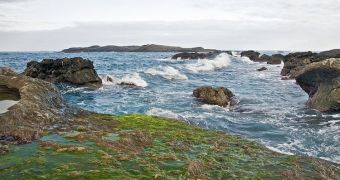Researchers at the Brown University and the Texas A&M University were recently able to use an innovative method to recreate the long-term history of the American Southwest, an area now renowned for its aridness, but which did not always look like this.
Since gathering data on ancient climate patterns from the underground is very difficult and prone to interpretation errors, they took a different route – analyze the remnants of surface-dwelling algae that lived across the area millennia ago.
What is very important to know about these organisms is that they tend to adjust their biochemistry to surface temperatures. When they die, they sink to the bottom of the ocean, and then begin to form sedimentary deposits where the layers contain valuable data on temperature changes at that location.
By harvesting such deposits in a special manner, experts at Brown were able to access a record of ancient sea-surface temperatures ranging back several thousands of years. Colleagues at Texas A&M University contributed with measurements on ancient rainfall and weather patterns.
Apparently, the geological history of the American West is not as uneventful as experts first predicted. The entire region was significantly wetter than it is now, especially during the past ice ages. Numerous lakes dotted its surface as well, the new analysis indicates.
Details of the investigation are published in the September 27 issue of the top journal Science.
“Geologists had already known that it was wetter in the region 20,000 years ago and then dried out,” says Brown professor and chair of geological sciences, Timothy Herbert. He was in charge of creating the geological reconstructions of sea surface temperatures that were used in this research.
“The traditional hypothesis was that these old lakes were supplied with water from westerly storms. The way things are set up today, there’s a big area of high-pressure circulation over the eastern tropical pacific, and a big area of low pressure in the Gulf of Alaska,” he explains.
When storms exit the low-pressure area and head south, it rains in California. When this doesn't happen, only the states of Oregon, Washington, and British Columbia, in Canada, remain wet.
“The high pressure is why you have deserts and an arid Mediterranean climate over most of southern California. During the last glacial period, that low pressure would have been further south because colder air had pushed these climate systems toward the equator,” he concludes.

 14 DAY TRIAL //
14 DAY TRIAL //